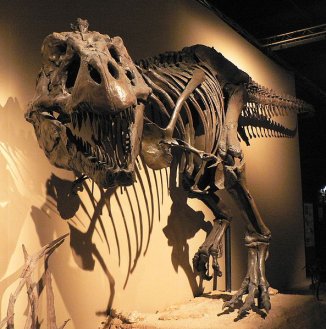NOTE: Long after this article was published, new experimental data was published indicating that the effect is not real.
Almost three years ago, I wrote about how I had changed my mind on radioactive half-lives. Throughout my scientific education (from high school through graduate school), I had it pounded in my head that radioactive half-lives are constant. There is so much energy involved in radioactive decay that there is just no way to change the fundamental rate at which a given radioactive isotope decays without taking extreme measures that don’t generally occur in nature. This was considered a scientific fact, and to question it was just not reasonable.
Over the years, however, more and more evidence has been piling up indicating that this scientific “fact” is simply not true. Some of the most surprising evidence has come from Brookhaven National Laboratory (BNL) and a German lab known as the Physikalisch-Technische Bundesanstalt (PTB). The group at BNL had been studying the radioactive decay of silicon-32, and they noticed that the half-life of the decay periodically increased and decreased based on the time of year. The half-life was shortest in the winter and longest in the summer. The variations were very small, but they were measurable. The PTB group was studying the decay of radium-226, and they noticed the exact same behavior. In the end, both groups concluded that the half-lives of these two isotopes were changing slightly in direct correlation with the minor variation in the distance between the earth and the sun. Thus, they concluded that the sun was affecting the rate of decay in those two isotopes.1
This conclusion was bolstered by a fortunate coincidence in which the BNL group was measuring the radioactive decay of manganese-54 before, during, and after the solar flare that occurred on December 13, 2006. They noticed that the half-life of that isotope’s radioactive decay increased more than a day before the solar flare occurred. In addition, the behavior repeated itself on December 17, when another solar flare occurred.2 Based on these two papers, it seemed obvious that the sun was exerting some influence over the half-lives of at least some radioactive isotopes.
Obviously, of course, others tried to replicate these results, and they weren’t always successful. A group at the University of California Berkeley analyzed their data for several different radioactive isotopes but saw no correlation between their half-lives and the seasons.3 However, a reanalysis of the same data seemed to show some variation correlated with the distance between the earth and the sun, although it was much weaker than what was seen by BNL and PTB. The authors of the reanalysis suggested that perhaps the influence of the sun was different for different isotopes. Since different isotopes have different half-lives, it makes sense that they would respond differently to an outside influence such as the sun.4
Well, some new data have come to light, and as far as I can tell, they confirm that at least for some radioactive isotopes, the sun is affecting the value of their half-lives.
Continue reading “There Seems To Be No Question About It: The Sun Affects Some Radioactive Half-Lives”






